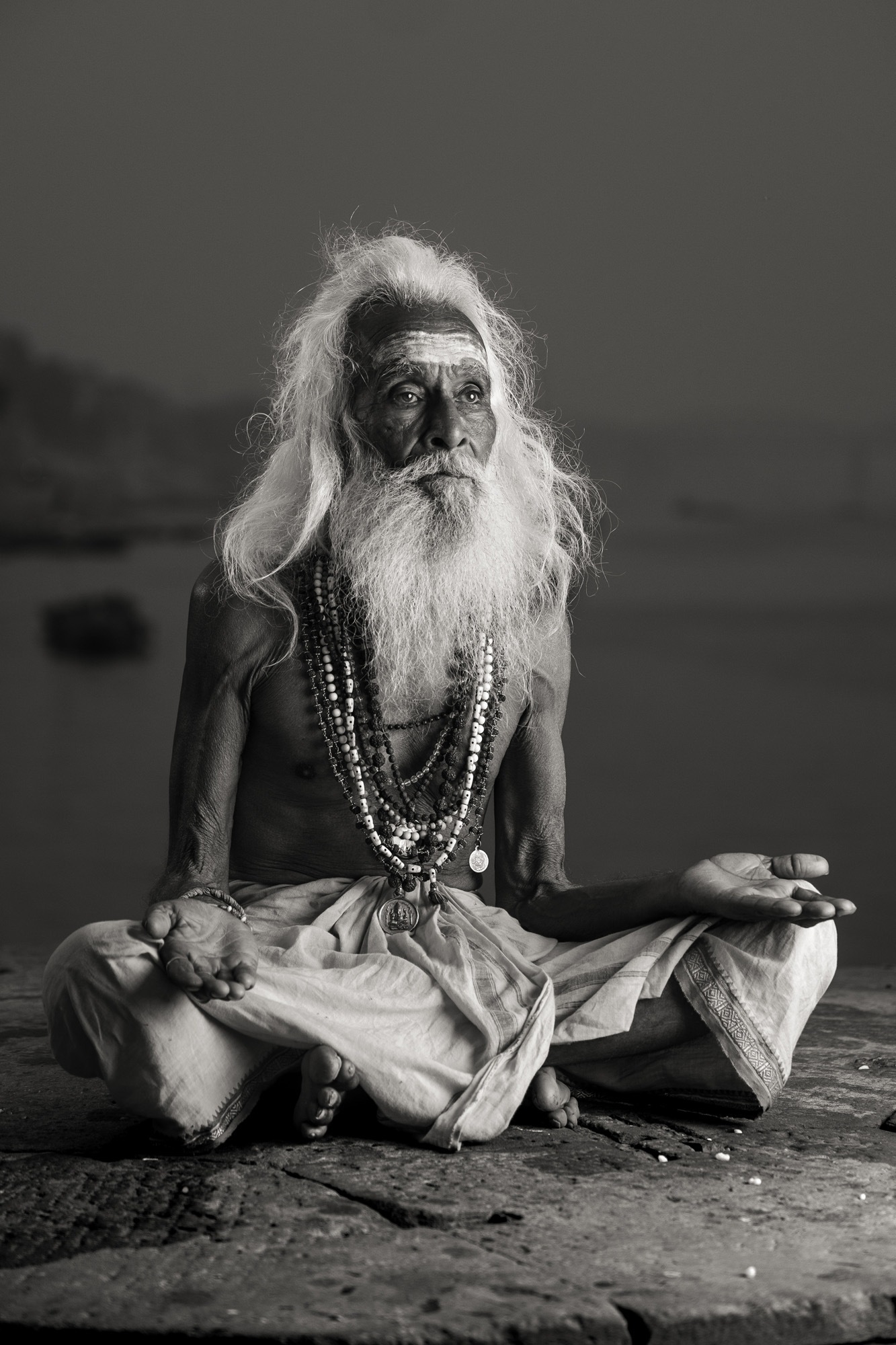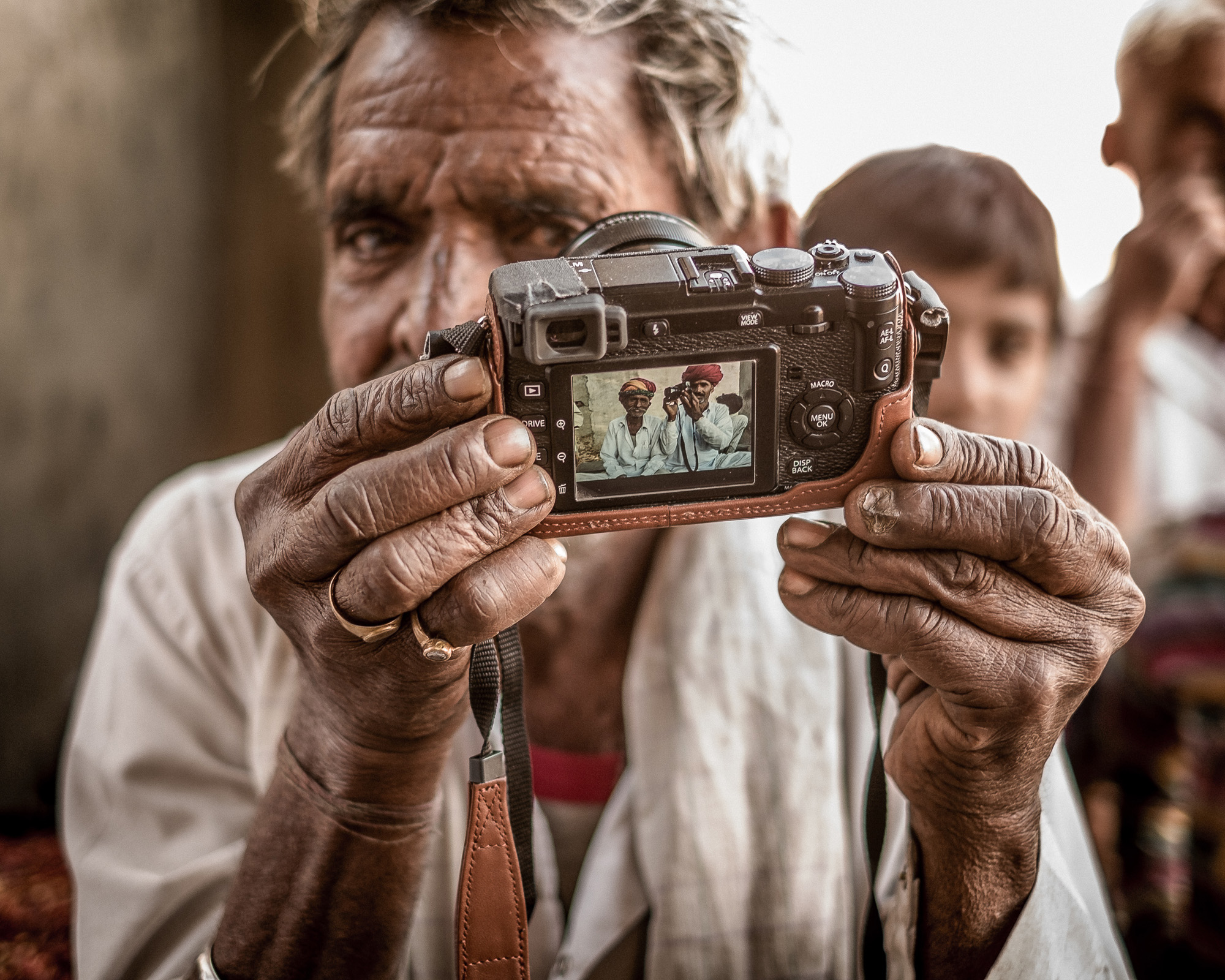
Going the X-tra mile. Travel photography with the X-series
Piet Van den Eynde
Piet Van den Eynde is a Belgian freelance photographer, author and trainer, specializing in travel portraiture. He likes to work with flash to create striking environmental portraits in remote locations, whether it’s the Mongolian Altai mountains or the Omo river valley in Southern Ethiopia. When he’s not traveling, he’s writing books and creating tutorials about photography, lighting and image editing. In his spare time, he likes to reverse engineer the lighting setups of popular tv-shows or play Monopoly with – and get beaten by – his son Noah.
Life before X
My desire for a small, lightweight yet high quality camera system dates back to 2009. That year, I undertook an one-year bicycle trip through South-East Asia, for a project called PortratisOfAsia. Together with my girlfriend, I cycled through parts of Turkey, Iran, India and Indonesia. Unfortunately, at that time, a small and light camera still was synonymous with “too many compromises” – and the Fujifilm X-series was still a couple of years from being announced, maybe even conceived.
So, I started the trip reluctantly with my full frame DSLR and a slew of lenses, flashes and other accessories. I lugged around 12 kilograms of camera equipment. On a bicycle! About halfway through the trip, I literally got tired of dragging this weight up the Iranian Alborz mountains and I exchanged the setup for a lighter and smaller crop factor DSLR camera and matching lenses. Although technically that new camera wasn’t as good as the one I had started the trip with, I noticed that my images improved, because I actually used the lighter camera more.
It was the first time I experienced that sensor size isn’t everything.
From ex-DSLR to X-shooter
Fast forward to 2012. I am planning another cycling trip. To Georgia and Armenia, this time. The X-Pro1 had just been announced and I had contacted Fuji Belgium to see if I could get a sample to see whether this could become my ultimate travel camera.

One of the very first images I made with the X-Pro1. I love the X series for people photography. Especially when equipped with a small prime lens, the camera looks inconspicuous, even friendly. It puts people at ease and soon they forget its presence. It’s not a coincidence that the X-Pro1 was in the delivery room when my son was born. FUJIFILM X-Pro1 | XF18mmF2 R | 1-170 sec at f-4,0 | ISO 160
It was love at first sight: I loved the retro, inconspicuous look of the camera and the spontaneous images it helped me capture. But as with all relationships, there were also some quirks and annoyances: the camera’s write to card speed was very slow and being a super wide angle fan, the 18 mm (27 mm full frame equivalent), which was the widest lens available at that time, felt like I was photographing through a telescope! Furthermore, being used to a fast 85 mm 1.4, the 60 mm 2.4 often did not give me the bokeh I was used to. As a result, the 35 mm 1.4 quickly became my favorite lens of the three initial lenses in the Fujfilm lens lineup: built like a tank and capable of nice foreground to background separation at f/1.4.

One of my favorite images to date. I always show this image when I explain that it’s good to work with two cameras: when a photographic opportunity like this arises, you don’t want to be without a second body to capture it. FUJIFILM X-Pro1 | XF35mmF1.4 R | 1-80 sec at f-1,4 | ISO 200
From one X to the other
I have shot with about every X-camera there has been, except for the original X100.
After the X-Pro1, I’ve used the X-E1 and the X-E2 and especially the latter, I liked a lot. I took the X-E2 to the travel photography workshops that fellow X-Photographer Matt Brandon and I teach in India.
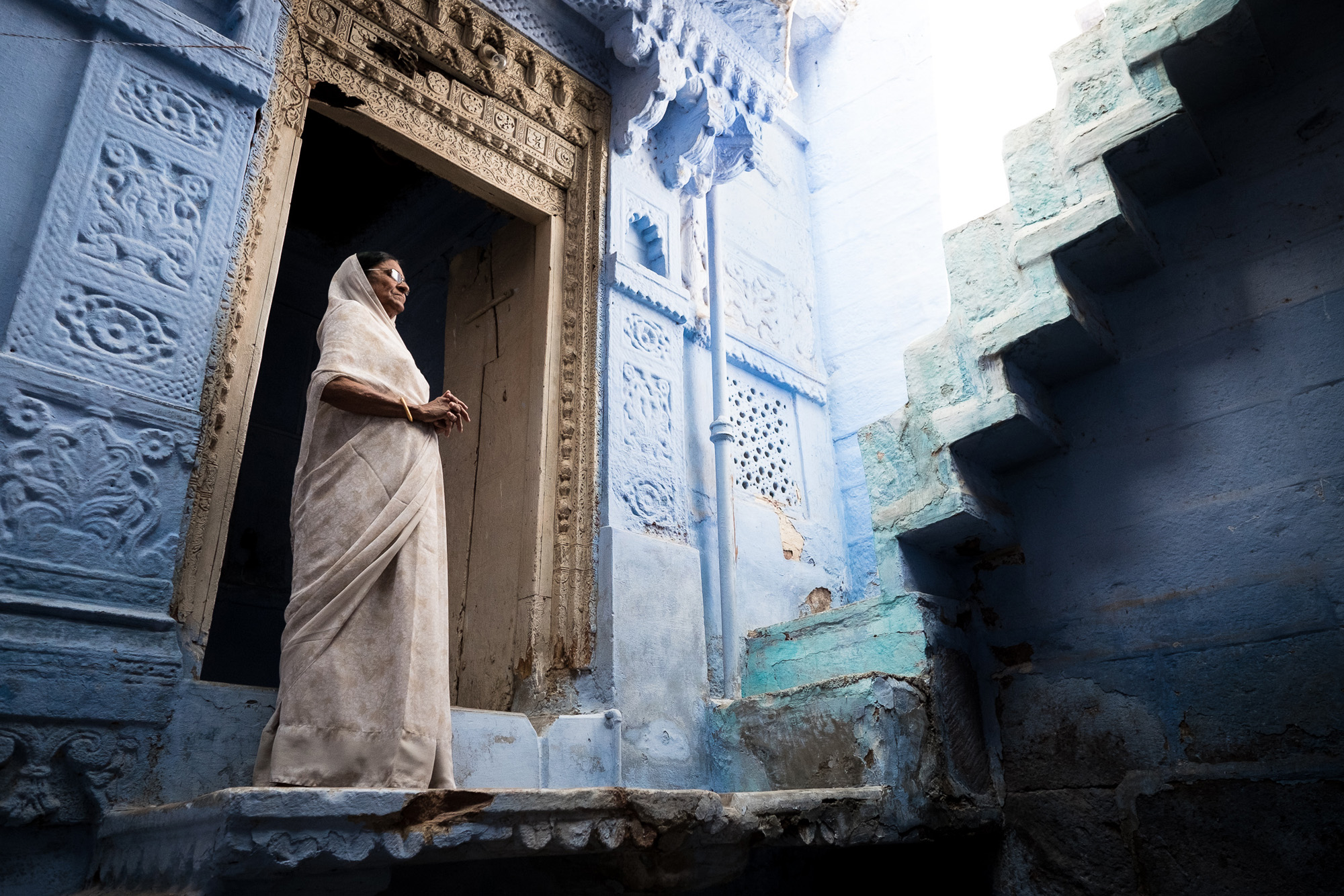
I love the functional retro styling and the fact that you can see at a glance to which parameters your camera is set to and that you can set them in advance without even having to bring the camera to your eye. Opportunities like this come and go in a snap second so you don’t want to be fiddling with your settings when you should be pushing the shutter button. FUJIFILM X-E2 | XF14mmF2.8 R | 1-420 sec at f-4,5 | ISO 1600
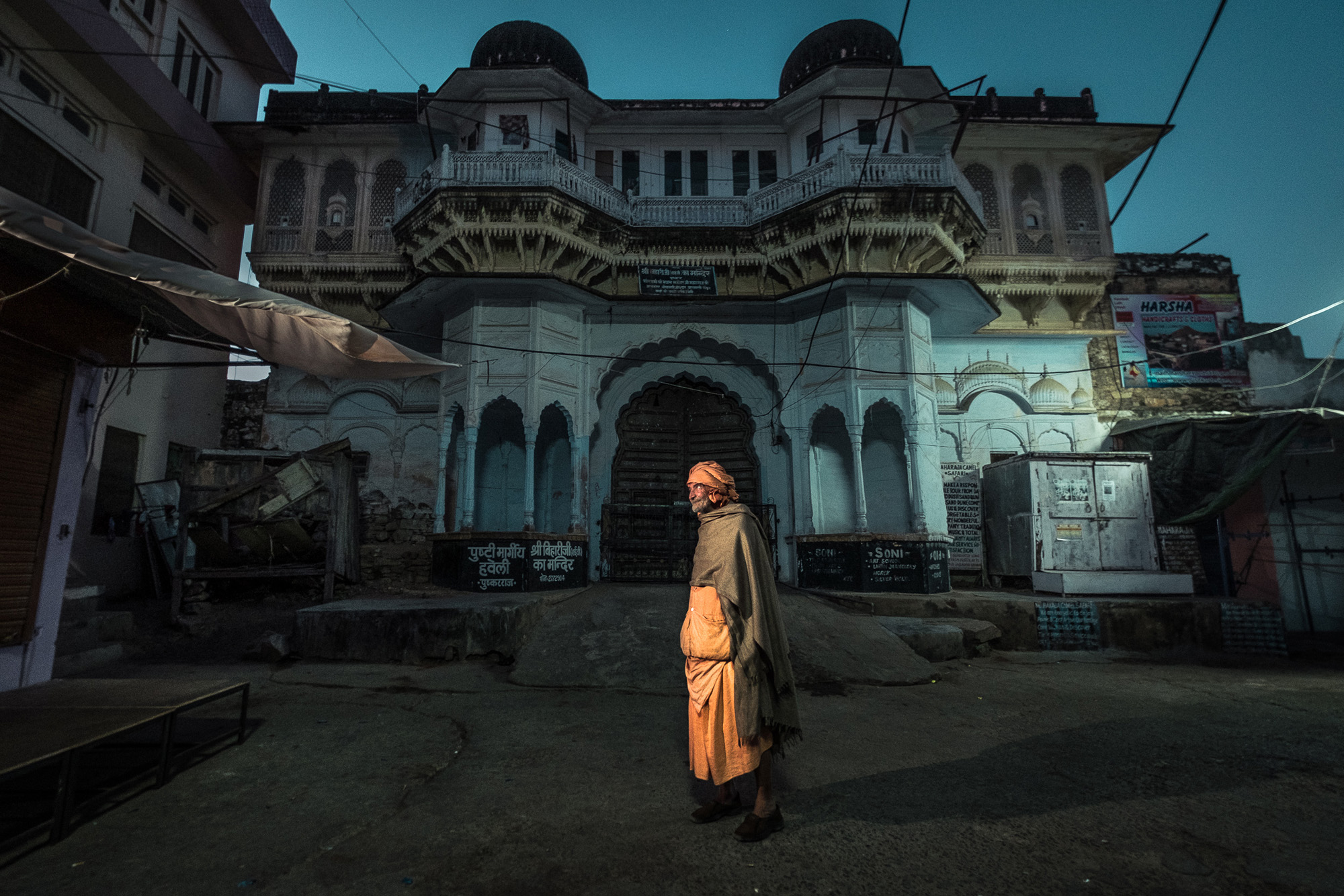
Pilgrim on his way to the ghats, Pushkar, India. Lit with a remotely controlled, orange-gelled Cactus RF60 speedlight. FUJIFILM X-T1 | XF10-24mmF4 R OIS | 1-3 sec at f-4,0 | ISO 800
Over the past years, my lens and camera arsenal have grown significantly: I now use (and sometimes positively abuse) 2 X-T1s, 1 X-Pro2 and 1 X100T. My favorite lenses include the afore-mentioned 10-24 and the 56 1.2. Lately, I’ve also been using the 50-140 and the 16-55 a lot. When the latter was released, I was so hoping I would NOT like it, because of its weight and size. However, after a couple of test shots, I was hooked: this lens is probably the sharpest in the whole Fuji lineup and it’s an essential lens for any serious X-shooter.
As I explain in this post on my blog, I was honored, humbled, frightened and excited to be chosen as one of only a hundred photographers worldwide to receive an advanced copy of the long awaited X-Pro2. You can read the full review there, but suffice to say that it gives us X-shooters yet another step up in terms of image quality, sharpness and responsiveness. And that focus joystick. I haven’t been this happy to use a joystick since the video games of my amusement hall years, a couple of decades ago.

Young meets old in the alleyways of Varanasi. A flash gelled with an orange filter adds some color contrast to this street scene. FUJIFILM X-T1 | XF10-24mmF4 R OIS | 1-125 sec at f-4,0 | ISO 800

Flower market in Varanasi, India. One of the areas the X-system shines, is in street photography. The camera is so small and unobtrusive, people will forget you’re there. Which is exactly the moment you want to start photographing. FUJIFILM X-Pro2 | XF16-55mmF2.8 R LM WR | 1-125 sec at f-3,6 | ISO 1600

The X100T is the camera I bring “when I don’t want to bring a camera”. It relieves me of the usual “which lenses will I bring” dilemma as there is only one. Or should I say: two, as I use it a lot with the excellent wide angle conversion lens. I also love its focal plane shutter which lets me use a simple speedlight and make it look like I used a big studio light. This image was lit at full power at 1/1700th of a second. On a camera with a typical sync speed of 1/200th, I would have needed 8 hotshoe flashes. Not something I carry around on a typical family outing. FUJIFILM X100T | 1-1700 sec at f-4,0 | ISO 200
The X100, my eXtra camera
Of all the cameras in the Fujifilm lineup, the X100 series, of which I’ve used the S and the T models, holds a special place in my heart: this is the camera I take with me when I want to work super-light and super-quiet. It accompanies me on family trips, but I also use it as a specialty camera when I do flash photography: because of its leaf shutter, it can sync with a flash at speeds up to 1/2000th of a second. This means not only means that you can freeze action in broad daylight, but also that a simple hotshoe flash can become as powerful as a big studio strobe on a camera with a regular sync speed.
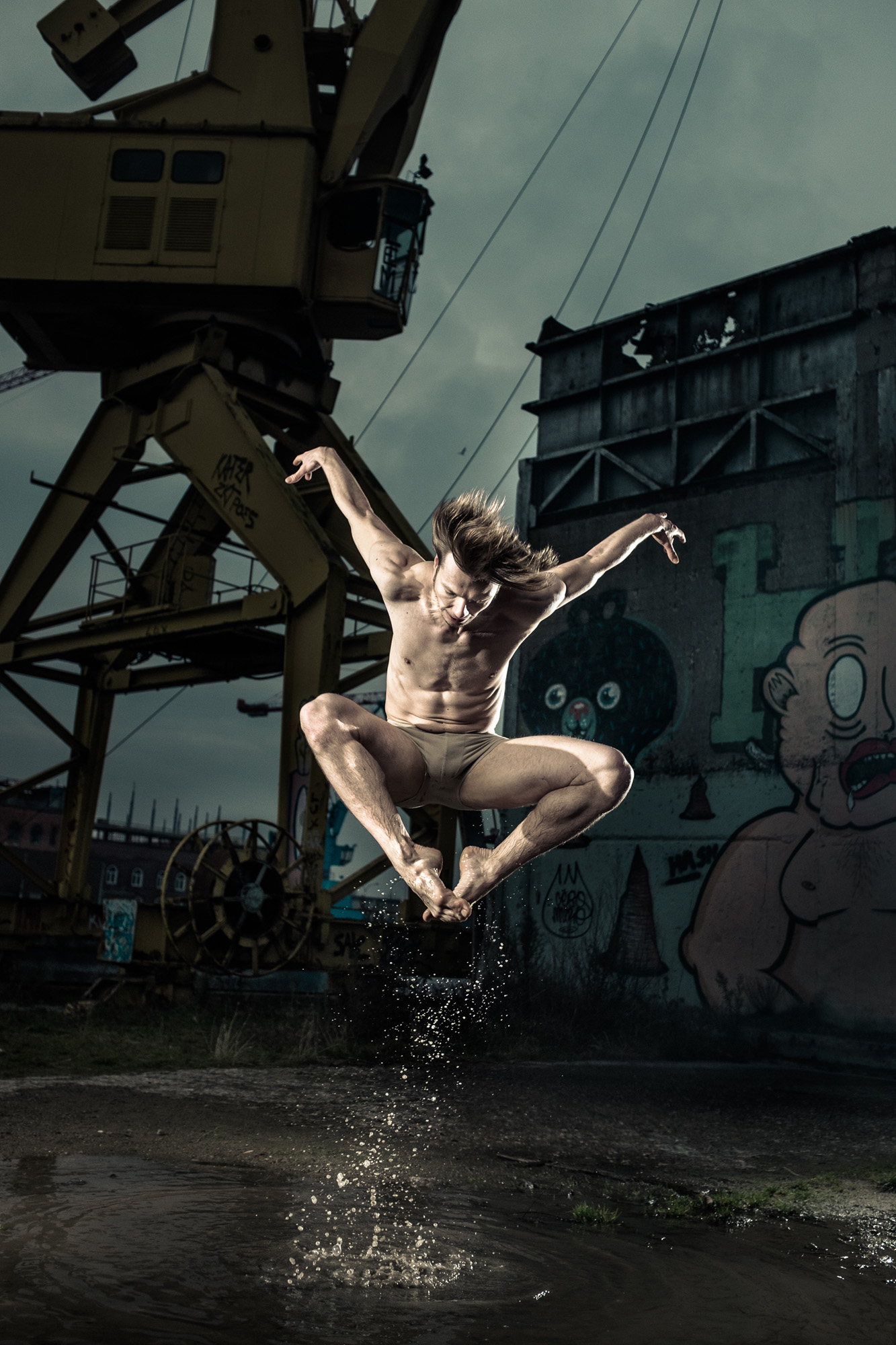
This is literally the last shot I took of dancer Brecht before the battery went down. The X100T’s fast sync speed lets me freeze motion when using flash in combination with ambient lighting. FUJIFILM X100T | 1-500 sec at f-2,8 | ISO 400
History repeats itself
In my immediate neighborhood, more and more DSLR photographers are making the switch to mirrorless cameras. Not a week goes by that I don’t get a question that invariably goes something like this “I am tired of lugging this big camera system around, can you recommend something that is smaller and lighter, yet of good quality?” I know the feeling. I was there almost 5 years ago.
I invariably point them to the X-system for the following reasons.
1) An excellent weight and size to quality ratio.
I still remember that when I gave a talk about the original X-Pro 1 on the 2012 edition of Photokina in Cologne, Germany, a guy came up to me and said he could not believe that the big (1.5 x 2.25 meter) prints that were exhibited at the Fujifilm stand, were made with an X-Pro 1. He thought Fujifilm had secretly used a medium format camera! It’s the best – unwanted – compliment I’ve ever heard about the X-system.
What I especially like is the flexibility of the raw files in terms of post processing: part of what I do is teach post processing. I love to explore what I can do with the colors and tones of my raw files and the Fujifilm files are very willing travelers in that journey. This is also the reason why there’s a visible difference in the post production style of the images in this post: I wanted to show some of the different styles I’ve been working on lately.
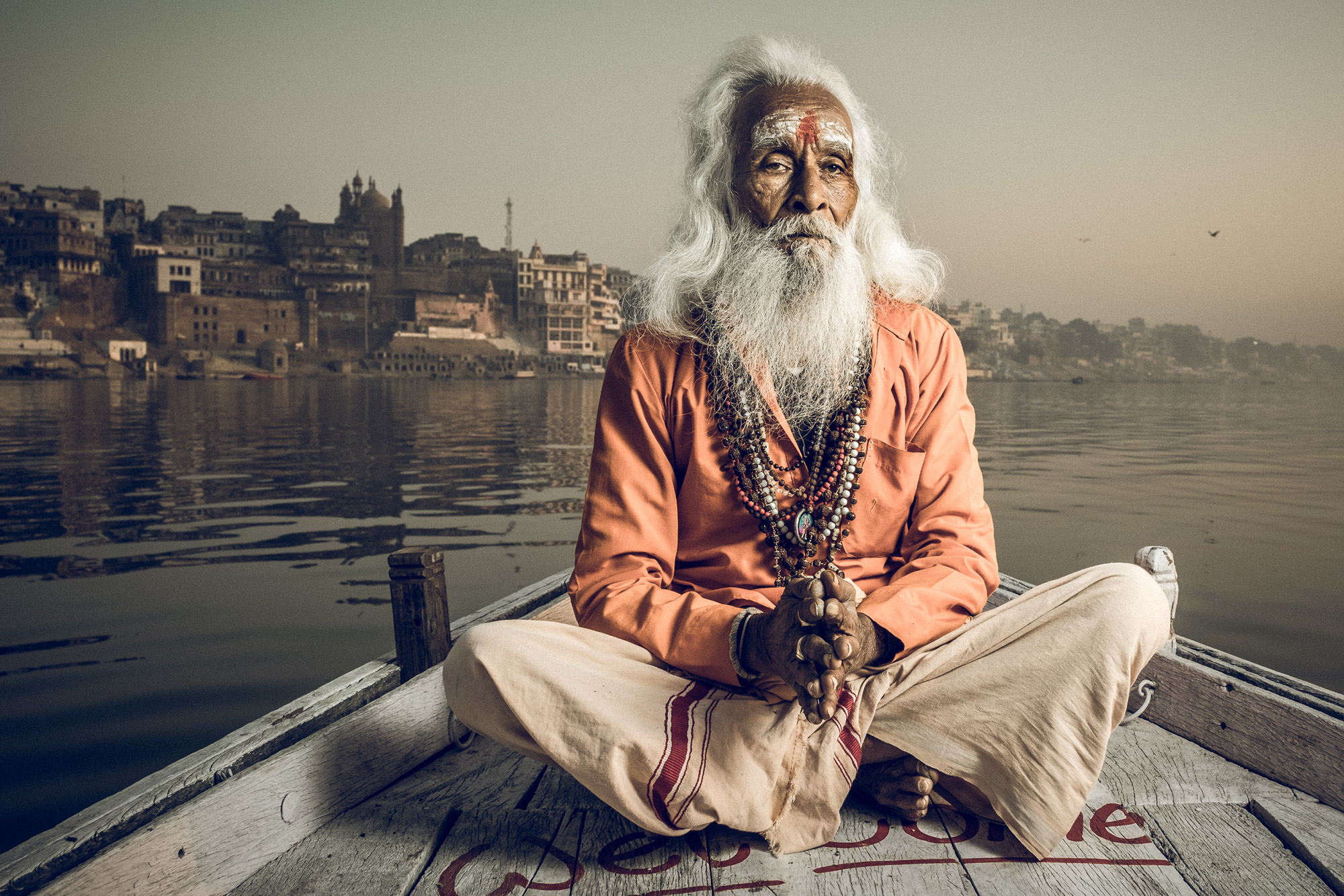
I like to give my images a filmic look. I often use Classic Chrome as a starting point and then tweak the look further using Adobe Lightroom and a set of Lightroom presets I have created specifically for that. FUJIFILM X-Pro2 | XF16-55mmF2.8 R LM WR | 1-250 sec at f-7,1 | ISO 200
2) A lens line up whose major problem is that there’s so much quality glass to choose from
As we all know, the camera is only part of the story. Unless you’re into pinhole photography, even the best body is nothing without an equally good lens. It’s hard to believe that from the limited choice between 18, 35 and 60 millimeter only a few years ago, the situation has now been reversed: there’s almost too much to choose from with focal lengths ranging from 10 to 400 mm and apertures as wide as 1.2! With a choice of fast zooms, even faster primes and a couple of convenience lenses, there’s almost everything a pro shooter, let alone an enthusiast, needs. The only thing missing was a super telephoto, and the 100-400 has filled even that hole.
3) State of the art viewfinders
I just love Electronic Viewfinders. So much that on those very rare occasions when I do pick up a DSLR (usually owned by one of my workshop participants), I am completely at a loss. As I do a lot of flash photography, I like the fact that the EVF lets me set my ambient exposure without firing a test shot and that I can instantly review the image I just made in the viewfinder without putting the camera down and therefore risking to loose great shots. Also, the fact that a simple push on a button (the Focus Assist button on the X-T1, or pressing the Rear Command Dial on the X-Pro 2), lets me zoom in to 100% on the focus point I selected to evaluate sharpness, is fantastic.

Shooting RAW in one of the more raw areas in Vancouver. I love the Electronic Viewfinders (EVF) in the Fuji camera line-up: when I’m doing street photography, I enable one of my custom settings which sets the camera to shoot RAW + Square JPEGs with one of the B+W film simulations. Seeing a square black and white preview in the viewfinder is a tremendous help during composition and the selection of potential subjects. And having the RAW file as a kind of backup, keeps my options open should I decide an an alternative crop or a color version afterwards. FUJIFILM X-T1 | XF10-24mmF4 R OIS | 1-320 sec at f-16 | ISO 400
4) The instax Printer: instant Karma
As a traveling photographer, I like to give the people I photograph a small token of my appreciation in the form of a small print. I used to use a different system which involved cables and really weak batteries, but with the advent of the instax Printer, I can now print wirelessly from my camera to the instax.

The instax Printer. I’d rather leave a lens at home than this baby. FUJIFILM X-E2 | XF14mmF2.8 R | 1-180 sec at f-9,0 | ISO 200
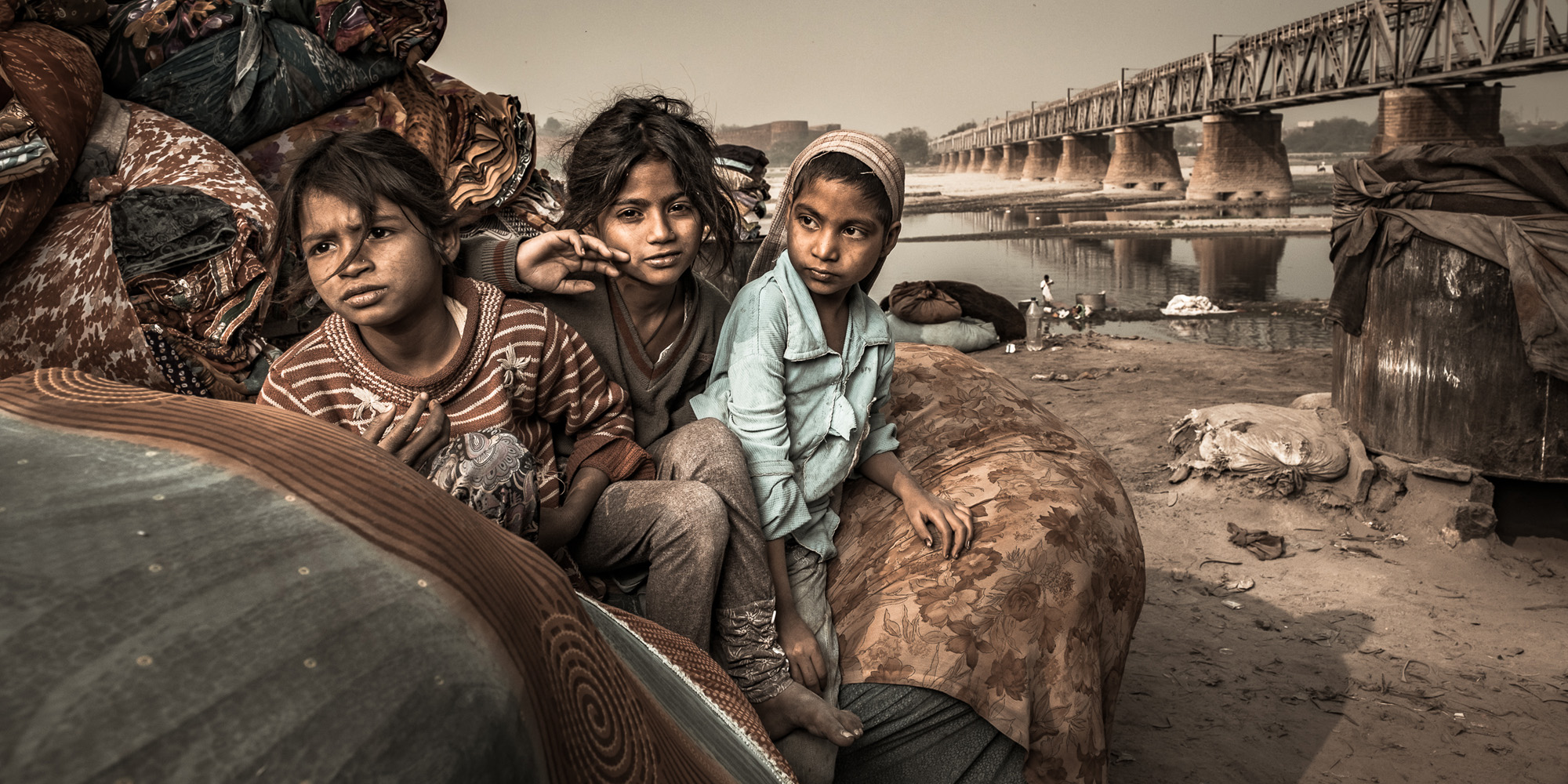
The Dobhi Ghat in Agra. Children are playing while the elders wash clothes in the Yamuna river. FUJIFILM X-Pro2 | XF16-55mmF2.8 R LM WR | 1-250 sec at f-6,4 | ISO 200
5) The Kaizen company
Last but not least, there’s Fujfilm’s attitude as a company: first of all, they are one of but a few camera companies that actually seem to care about their clients: they constantly listen to feedback, they bring out new firmware (like the recent X-E2 firmware upgrade which basically turned that camera into an X-T10, free of charge) on cameras that other companies would consider obsolete. I am kind of wishing I hadn’t sold my X-E2! This kaizen-approach probably makes Fujifilm loose money in the short run because people use their existing cameras longer. In the long run, however, I think it creates an incredible goodwill and brand loyalty. In today’s competitive world, it’s good to see camera companies think about the long run.
In that same spirit, I appreciate the fact that Fujifilm regularly update their lens roadmap. Again something that very few – if any – other companies do.
My eXpectations for the neXt 5 years.
Now, is everything just smelling of roses? Is the system perfect after only 5 years? Of course not. The main thing I am missing in the Fujifilm lineup is a native, well-versed flash system. In my DSLR days, I was used to a complete flash ecosystem with off-camera TTL and High Speed Sync. For some reason, flash was the weak link in the Fujifilm ‘Evolution to Revolution’. Which is all the more strange, considering among its best-known proponents are people like Zack Arias and David Hobby, who both are very well known for their flash work.
Now, this hasn’t stopped me from using flash, as you can see from some of the images in this post. In fact, I have “reinvested” almost all of the weight savings that switching to the smaller and lighter X-system gave me, into manual flashes, including a 600 Ws one. That gives me loads of power, but no High Speed Sync.
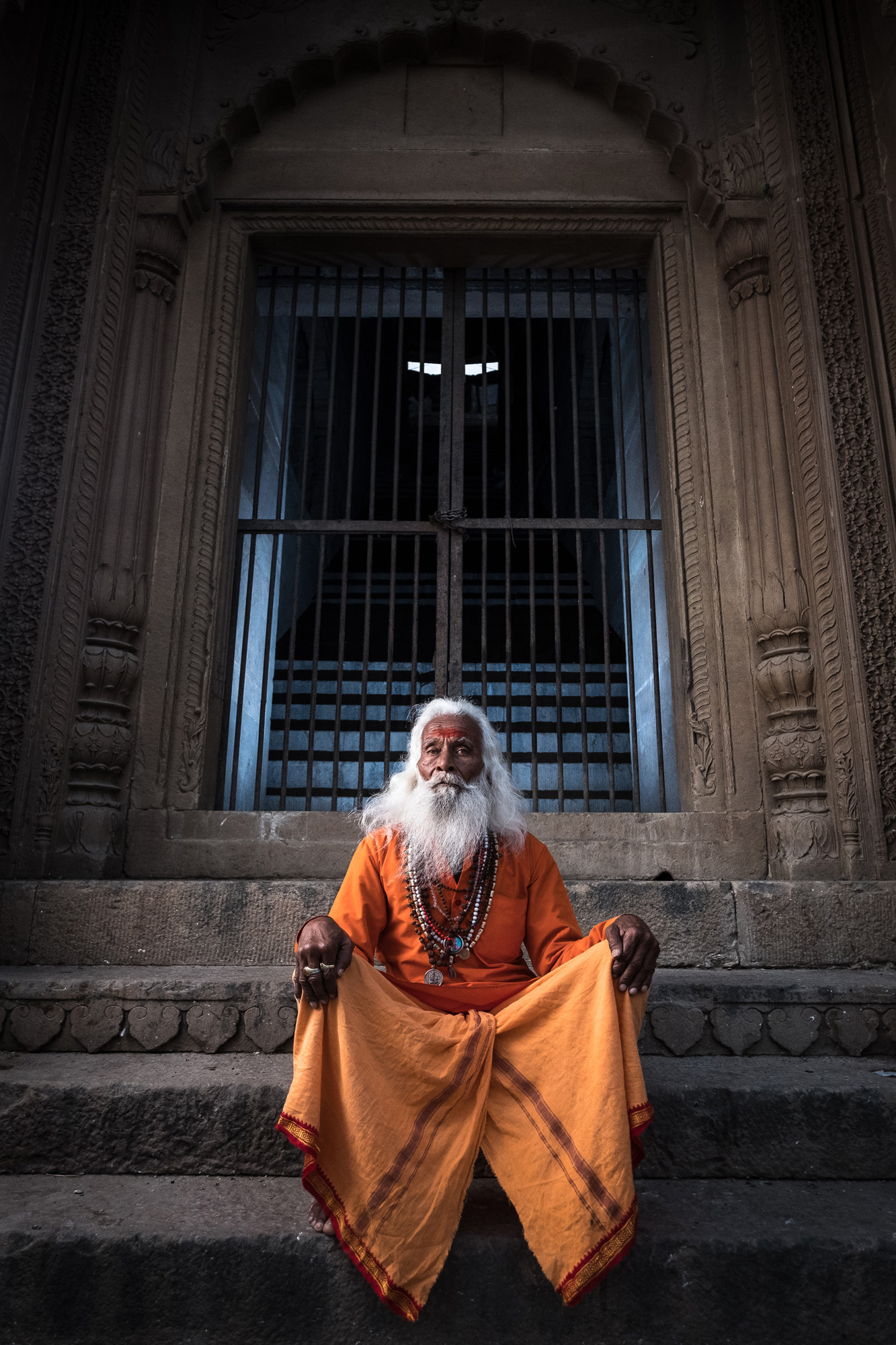
Sadhu in Varanasi, India. 2 Flashes were used in this image: one in a gridded SMDV Speedbox 70 to the left of the camera and another one with a blue gel in the hallway behind the wise old man. FUJIFILM X-Pro2 | XF10-24mmF4 R OIS | 1-30 sec at f-4,0 | ISO 800
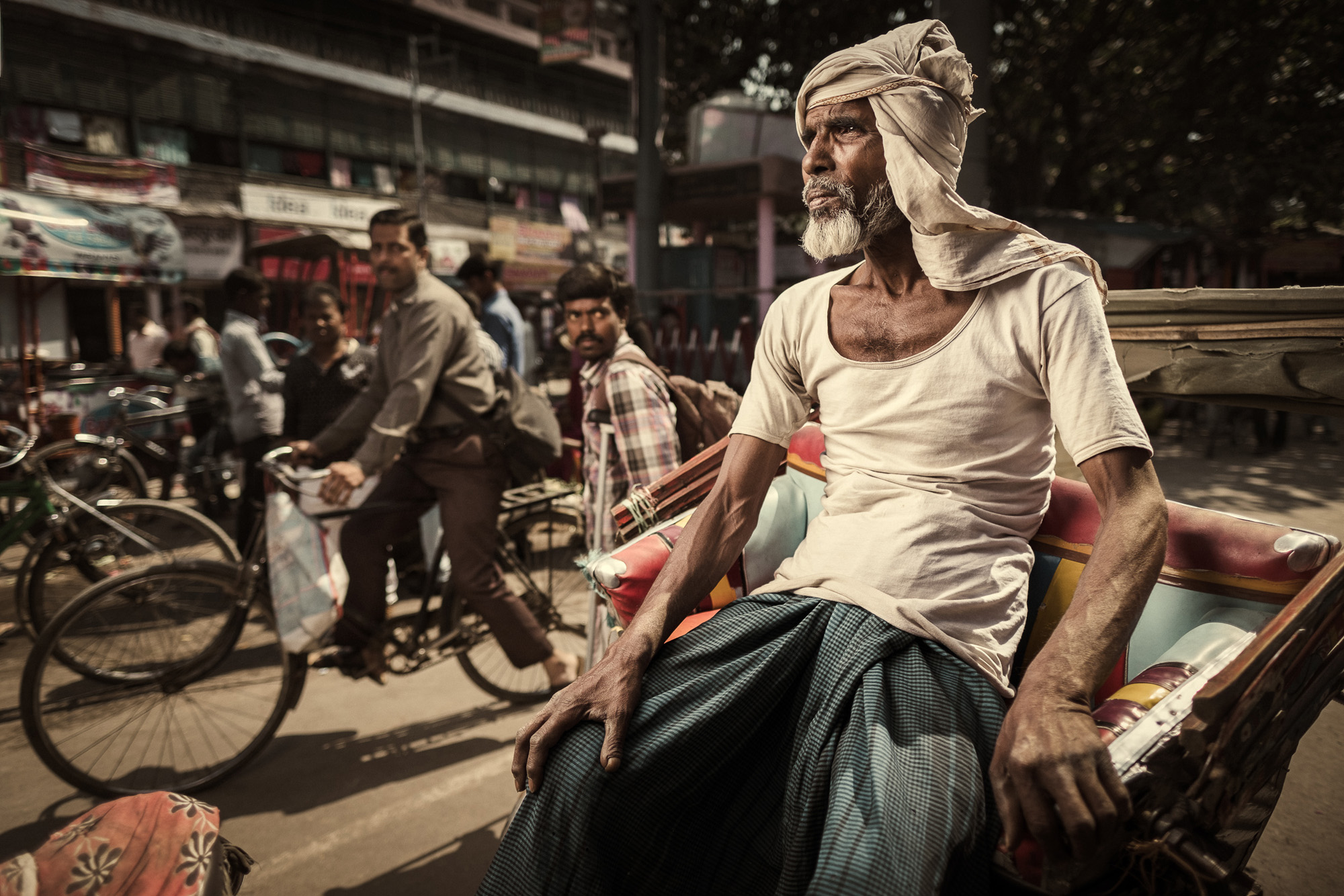
Rickshaw driver in Varanasi. I wanted to use the XF16mm 1.4 almost wide open, so I used a ten stop ND filter to knock the ambient light down far enough to get to the X-Pro 2’s flash sync speed of 1/250th of a second. With Fujfilm’s upcoming High Speed Sync flash, I will have to use ND filters a lot less in the future. FUJIFILM X-Pro2 | XF16mmF1.4 R WR | 1-250 sec at f-1,8 | ISO 200
But, low and behold, it looks like my wishes won’t take 5 more years to materialize. Fujifilm has recently announced the EF-X500 flash with remote control, TTL and High Speed Sync! I also hope that Fujfilm will open up their TTL protocols to third-party developers so that we can hope to see even more powerful, portable studio flashes that can do High Speed Sync and TTL with Fujifilm cameras.
And of course, I am looking forward to the new X-T2, the successor of my favorite X100 , an X-Pro3 with a tilting screen and the rumored Medium Format Fuji. And while we’re at it, I’d love to see a really wide angle fast prime or zoom, like a 10-24 f/2.8. But in the mean time, I’m mostly looking forward to the travels and photo opportunities that these current and future lightweight marvels of technology will enable.
Piet Van den Eynde
Gent,
@mtwpiet
www.morethanwords.be/blog
















































